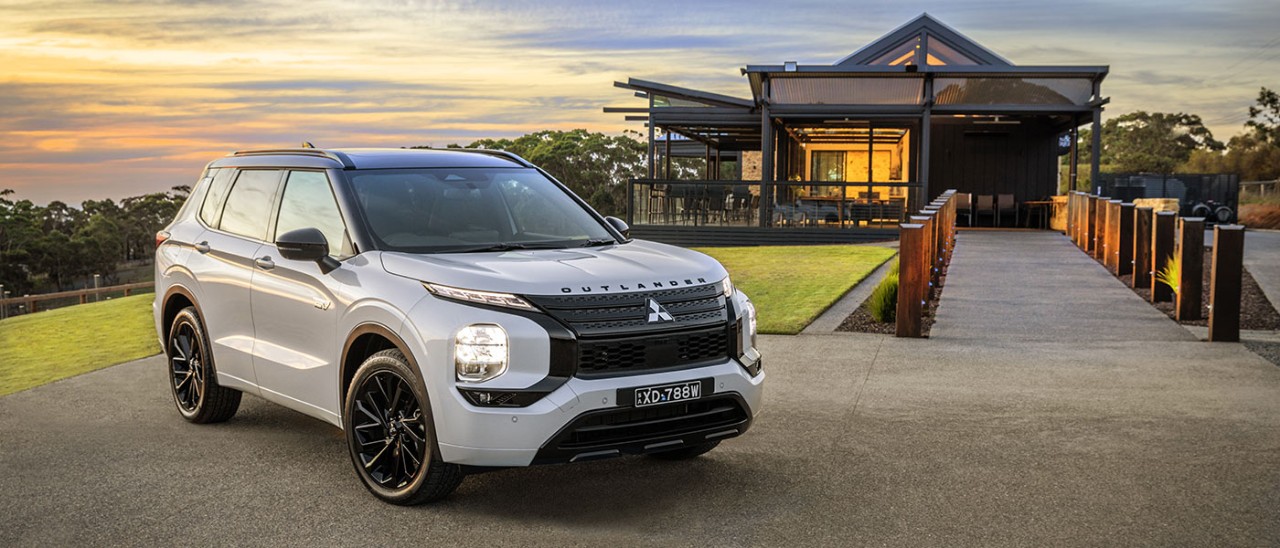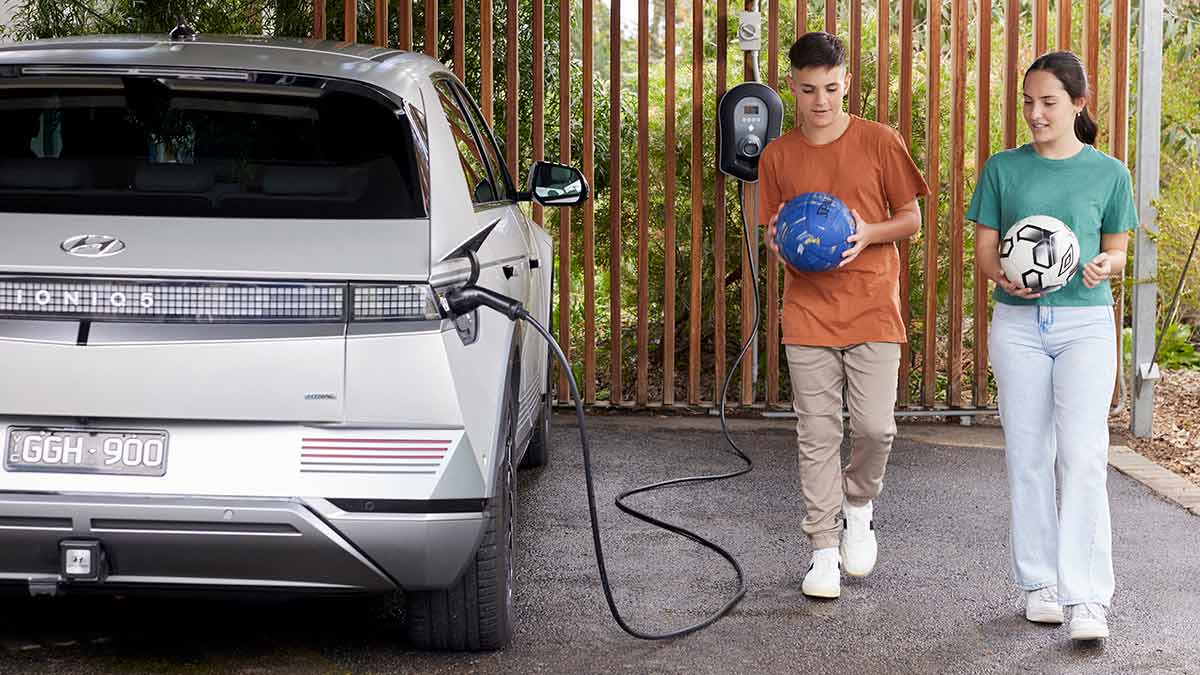You can now buy an EV for $25,000 and there’s a wide range of electric cars and SUVs for less than $45K from BYD, MG, GWM, Chery and other brands. Here are the cheapest EVs to buy in Australia right now.
Guide to bidirectional charging in Australia: V2G, V2H & V2L

Many electric vehicles (EVs) can already be used to power household appliances, but your entire home? Bidirectional charging is set to expand in Australia, so here’s a guide to what’s coming.
Battery-electric vehicles (BEVs) and plug-in hybrid electric vehicles (PHEVs) are growing steadily in Australia as motorists switch on to the benefits brought with electrification, including the potential for lower running costs and routine maintenance expenses.
But this might just be the start, with Australia moving towards bidirectional EV charging, which can enable BEV and PHEV owners to use their car’s high-voltage battery to help power their home or the electricity grid.
Vehicle to Home (V2H) technology could make a significant difference to a household’s electricity bills and provide critical support in emergencies, such as blackouts, while Vehicle to Grid (V2G) can help support the reliability and stabiity of the broader network. These capabilities are in addition to Vehicle to Load (V2L) - already present in many EVs - which allows external appliances to be powered by the vehicle.
Bidirectional home charging isn't yet accessible in Australia, but it's progressing rapidly. This article outlines how the tech works, and how households might one day benefit from using an EV as an energy source, as part of their home EV charging set-up.
RACV guides to help with buying an electric car
In this article
- What is bidirectional EV charging?
- Types of bidirectional charging: V2G, V2H, V2L
- How does bidirectional charging work?
- Are bidirectional chargers available in Australia?
- Which EVs have bidirectional charging?
- Is bidirectional charging safe?
- Are there drawbacks with bidirectional charging?
- Where to next for bidirectional charging in Australia?
What is bidirectional EV charging?
A vehicle with bidirectional charging capability can not only take power from the electricity grid to charge the EV battery but can also supply power back into the home (or another building) or direct it into the grid. Effectively, it enables your electric car to act as a home battery or generator, storing energy that can be used outside the vehicle.
This has the potential to reduce a household’s power bills, especially when using energy from the battery to avoid peak electricity rates. The stored energy can also act as a backup power supply if an outage occurs, while sending power back into the electricity grid may help stabilise the national network in high-demand periods.
When integrated with a smart rooftop solar system, bidirectional charging can also allow the EV to act like a solar battery, soaking up excess solar power generated during the day and then exporting that energy at night and other peak times to support the household’s (and local grid’s) electricity requirements.
For Australian motorists, bidirectional charging could greatly enhance the value of their EVs. While there are still challenges to address before it becomes a practical option, Australia is getting closer to the point where cars can serve as more than just transportation.
More: Home solar power system guide
Types of bidirectional charging: V2G, V2H, V2L
There are three main types of bidirectional charging for electric vehicles:
- Vehicle to Grid (V2G) – where the EV’s battery feeds excess energy back into the electricity network, supporting renewable energy supply and helping balance demand.
- Vehicle to Home (V2H) – where the EV’s battery supplies power only to the home’s electrical system, remaining separate to the grid to facilitate an off-grid household or to provide power for the home during an outage. Powering other buildings is known as Vehicle to Building (V2B).
- Vehicle to Load (V2L) – where the EV’s battery provides power directly to external devices such as camping equipment, tools and small household appliances via a standard three-pin power point in the vehicle or an adaptor plugged into the car’s AC charging port.
The combination of the three capabilities is sometimes referred to as Vehicle to Everything (V2X), however the main areas of focus for Australian regulators and industry are the EV’s ability to charge directly to the home and/or grid (V2H and V2G).
That’s because V2L, which does not feed directly into the home’s electrical system, has already become a common feature on many different electric cars, including popular models from Hyundai, Kia, BYD and Mitsubishi. Tesla does not currently offer V2L on its EVs in Australia, but some aftermarket providers have developed adapters.
More: What is Vehicle to Load (V2L) for electric vehicles?

This Hyundai Ioniq 5 receives energy from a smart EV home charger but might one day send it back to the home or the electricity grid. Image: Garth Oriander
How does bidirectional charging work?
When you plug an EV into a home charger or a regular domestic power point (nominally 230V), the car typically receives alternating current (AC) electricity. However, an EV’s battery needs direct current (DC) electricity to store and then use to power the car, so to bridge this gap it has an onboard unidirectional charger that converts the incoming AC supply into DC.
Bidirectional charging also converts AC to DC to charge the EV’s battery but enables the reverse process, converting the stored DC power back into AC. This is usually handled by an inverter, which might be built into the car or located in the external charging equipment, depending on the system design.
In all cases, bidirectional charging relies on smart home charging infrastructure and compatible EVs to safely manage power flow in both directions.
More: How to plan for your home to go all-electric
Are bidirectional chargers available in Australia?
Several trials of bidirectional charging have been undertaken in Australia using vehicles that are capable of V2G and V2H charging, but it’s a complex area with a lot of challenges for regulators, suppliers, manufacturers and other stakeholders to overcome.
A small number of EV owners have installed a V2G/V2H charger at their home, but up until recently this required individual approval from electricity distributors and regulatory bodies. There was also just a single bidirectional charger available with conditional approval, however it’s no longer in production.
In November 2024, the Federal Government moved to streamline this process, updating the relevant Australian Standard (AS 4777) that clarifies the technical requirements for bidirectional charging systems and allows the certification authority, the Clean Energy Council, to add new V2G/V2H chargers to its database.
As a result, several manufacturers are now working to ensure their products comply with the new standard and other local requirements, such as those set down by electricity Distribution Network Service Providers (DNSPs).
This will take time but should eventually see a wider range of V2G charging options become available for consumers across Australia.
More: How much solar energy do I need to charge my EV?
Which EVs have bidirectional charging?
Up until recently, bidirectional charging in Australia was limited to BEVs and PHEVs using a specific CHAdeMO plug (short for ‘charge de move’), which is based on a Japanese standard and therefore found on Japanese cars such as the Nissan Leaf, Mitsubishi Outlander PHEV and Mitsubishi Eclipse Cross PHEV.
This is beginning to change as CHAdeMO becomes less common worldwide and focus shifts to the CCS2 (Combined Charging System Combo 2) plug that’s now the dominant plug type for new EVs capable of both AC and DC charging.
The updated Australian Standard for bidirectional charging allows both CHAdeMO and CCS2 plug types, opening the door for compatible EVs across many different brands.
That said, practical limitations still exist. These include having CCS2-compatible V2G/V2H chargers certified and available in Australia. What’s more, the extent to which importers of EVs that have bidirectional charging capabilities will commit to offering such a feature in our market remains unknown. Brands will need to upgrade their cars’ software as required and consider various other aspects such as warranty conditions.
EVs that can already provide power to external devices using V2L are expected to be among the first wave of cars with common CCS2 connectors that offer V2G and V2H capabilities in future, such as models from Hyundai (eg. Ioniq 5, Ioniq 6), Kia (eg. EV6, EV9), BYD (eg. Shark 6, Seal) and Polestar (eg. Polestar 3, Polestar 4).
A notable exception here is Tesla (eg. Model 3, Model Y), however the US brand has previously said it would introduce bidirectional charging by the end of 2025. This is still to materialise and there is no timeline for Tesla EVs offering V2G or V2H in Australia at this stage.
More: Guide to electric vehicle charging, plug types and cables
Is bidirectional charging safe?
Bidirectional charging is considered safe in Australia, provided it is implemented using certified equipment, installed by licensed electricians and compliant with applicable Australian Standards.
Bidirectional chargers typically include sensors and monitoring systems to measure and manage power loads. This should help prevent overload, ensure grid compliance and enable energy optimisation.
More: How to find and hire a tradie for your job
Are there drawbacks with bidirectional charging?
Bidirectional charging offers significant potential benefits but also comes with some notable drawbacks. Beyond the current lack of availability of bidirectional chargers and the limited number of compatible vehicles, there are other issues to consider. These include:
- Battery depletion – drawing energy out of your EV’s battery for use in your home will, by design, drain your car’s battery, but only as much as you allow. Ultimately, you have control over how much energy is used, and most systems are designed to avoid fully depleting the EV’s battery.
- Battery degradation – it’s possible that more frequent charging/discharging cycles will accelerate battery degradation over time. This might hinge on battery quality, chemistry and system management, such as the car’s ability to limit the depth of discharge to protect the battery.
- Upfront costs – the costs involved with installing a bidirectional charging system at your home are unclear, but could require a significant outlay. As with solar batteries, take-up rates could hinge on government subsidies or other incentives.
Where to next for bidirectional charging in Australia?
The landscape will change over the next few years in parallel with developments from the carmakers, charging infrastructure suppliers and other industry stakeholders working within the new regulatory framework.
Local research is also continuing to validate the technology, notably with a shift in emphasis to universal CCS2 plugs. For example, the CSIRO recently demonstrated how a CCS2-equipped BEV – in this case, a Ford F-150 Lightning (available through an independent importer) – can successfully store and share energy from a rooftop solar system.
“This successful demonstration of CCS2 bidirectional charging showcases the potential for a wide range of current and future EVs to become ‘batteries on wheels’ in people’s homes,” says CSIRO project leader, Sam Behrens. “This can support higher penetration of both rooftop solar and other renewable energy sources into Australia’s power grid.”
The Australian Renewable Energy Agency (ARENA) also recently released a roadmap outlining the path to widespread adoption of bidirectional charging. ARENA estimates that 300,000 V2G-capable EVs will be running in Australia by 2030, providing huge potential as an energy source for not only individual homes but all households across the nation via the grid.
According to ARENA CEO Darren Miller, bidirectional charging – especially V2G – means EVs won’t just be vehicles, “they’re the future of distributed energy storage and represent a game-changing opportunity for Australia’s energy future”.
“Bidirectional charging is a small but important step toward creating an Australian energy network that’s more renewable, more reliable and more affordable for all Australians,” he says.


